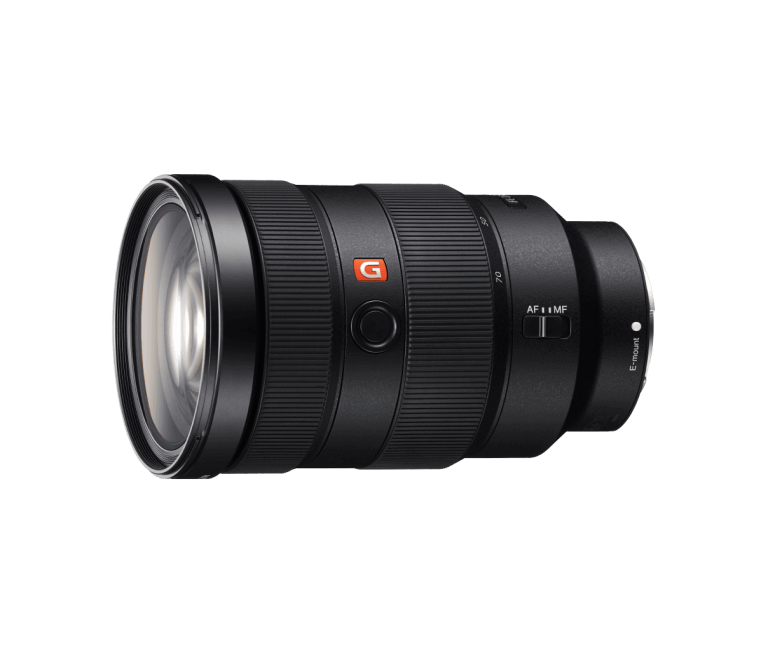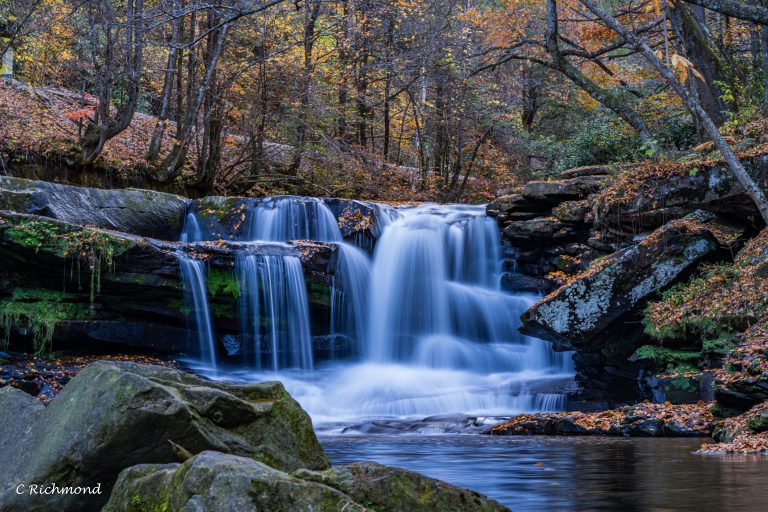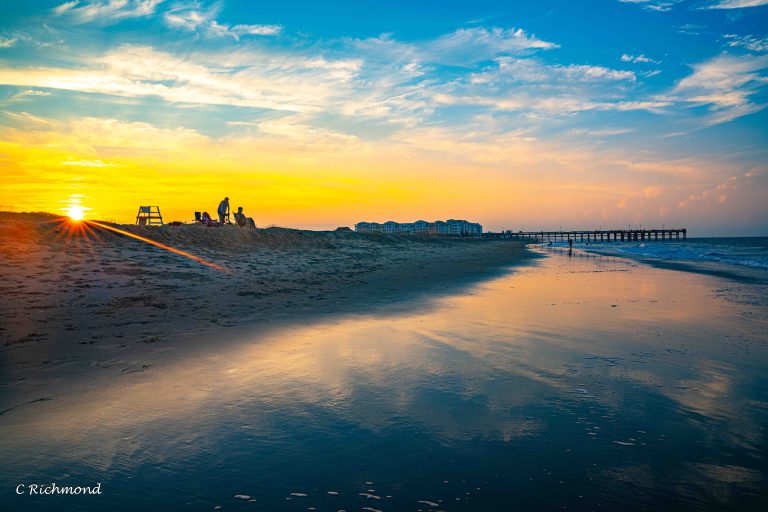A Beginner’s Guide to Mountain Landscape Photography: 20 Tips
Introduction
As a landscape photographer, my journey through the art of mountain landscape photography has been as exhilarating as it is challenging. Over the years, I’ve learned that photographing mountains goes beyond just capturing a landscape photo; it’s about narrating the grandeur of nature through my lens. This guide is the culmination of my experiences and photography tips, designed to help you navigate the intricate world of mountain photography with greater confidence and creativity.
In my quest to photograph mountains, I’ve found that every element, from the wide-angle lens that captures the vastness of a mountain range to the telephoto lens that focuses on a distant mountain peak, plays a pivotal role in the storytelling. The importance of the foreground in framing a beautiful mountain scene, the decision of focal length for each landscape, and the techniques like focus stacking to ensure crispness from front to back—these are the nuances that have transformed my mountain images.
One of the keys to successful mountain landscape photography is understanding the interplay of light and landscape. Whether it’s catching the first light of sunrise or waiting for the best light at dusk, these moments have the power to dramatically enhance a mountain photo. As you journey through these 20 tips, I’ll share insights on how a tripod can be your best ally, why a mountain’s silhouette can be as compelling as its detailed textures, and how to capture the essence of a mountain range in a way that resonates with your viewers.
Embarking on this path, you’ll discover that mountain photography is not just about the settings on your camera or the gear in your bag. It’s about connecting with the environment, understanding the subtle nuances of the landscape, and learning to see the world through a different lens—literally and metaphorically. Let’s dive into these 20 tips and unravel the secrets to capturing the majestic beauty of mountain landscapes.
Tip 1: Understand Your Equipment
Knowing your camera and lens options is paramount in mountain photography. When selecting a camera for this purpose, prioritize models that offer high dynamic range and robust build quality. For instance, a Sony Alpha 6700 or a Sony A7R V are excellent choices due to their weather-sealing and superior image quality. As for lenses, a versatile setup would include a wide angle lens, like a Sony 16-35mm GM II for capturing expansive landscapes. Use a telephoto lens like a Sony 70-200mm GM f2.8 for zooming in on distant peaks and wildlife. Remember, the rugged environment demands equipment that can withstand the elements. Also, consider the weight, as you’ll be carrying your gear over long distances and steep inclines.
Tip 2: Master Camera Settings
In the dynamic lighting of the mountains, mastering your camera settings is vital. Start by understanding the exposure triangle. In bright, snowy conditions, dial down your ISO to 100 or 200 to prevent overexposure. Shutter speed is key for capturing motion, such as flowing water or rustling leaves; a speed of 1/500th of a second or faster freezes motion. For landscapes, use a smaller aperture (higher f-number) to ensure everything from the foreground to the distant peaks is in sharp focus. Typically, an aperture between f/11 and f/16 strikes a good balance between depth of field and lens sharpness. Always shoot in RAW format for greater flexibility in post-processing.
Tip 3: Pack Essential Gear
In addition to your camera and lenses, several items are essential for mountain landscape photography. A sturdy, lightweight tripod is crucial, especially for long exposure shots and when shooting in low light conditions. Carbon fiber tripods offer the best balance between durability and weight. Don’t forget extra batteries; the cold can drain them quickly. Lens filters are also invaluable: a circular polarizer will help manage reflections and enhance the blue of the sky, while neutral density filters are perfect for smoothing out waterfalls or clouds. Protect your gear with weather-sealed bags and cases, especially if you encounter rain or snow.
Tip 4: Research and Plan Your Location
Thorough research and planning can significantly enhance your chances of capturing compelling images. Use tools like Google Earth and photography apps like PhotoPills to scout and visualize your location beforehand. Pay attention to the position of the sun or moon for the best lighting conditions. Check the weather forecast meticulously using apps like AccuWeather or The Weather Channel for sudden changes, which are common in mountainous areas. Study the topography and trails using hiking apps or maps to plan your vantage points. Timing is everything to ensure you’re at your chosen spot during the golden or blue hours for optimal lighting.
Tip 5: Embrace the Golden and Blue Hours
The golden and blue hours are prime times for mountain photography. During these periods, the low angle of the sun casts soft, diffused light and long shadows, which can dramatically enhance the texture and depth of the landscape. For the golden hour, I recommend arriving at your location at least 30 minutes before sunrise or sunset. This gives you enough time to set up and capture the transition of light. Post-sunset, don’t rush to leave; the blue hour brings a cool, serene mood to the landscape, ideal for capturing the tranquility of the mountains. A tripod is essential during these times for long exposure shots.
Tip 6: Experiment with Composition
Composition is key to creating engaging and memorable mountain photographs. Start with the rule of thirds to balance your shots; place significant elements like peaks or trees at the intersections or along the lines for a more dynamic composition. Look for leading lines – paths, streams, or ridges – that draw the viewer’s eye into the scene. Also, utilize natural framing, such as archways or tree branches, to focus on specific elements. Don’t hesitate to move around to find unique angles; sometimes a few steps to the side or crouching down can make a world of difference in how the elements align in your frame.
Tip 7: Focus on Depth
To convey the grandeur of mountain landscapes, depth is essential. You want the viewer to feel like they could step into the photo. Use a smaller aperture (around f/11 to f/16) to keep as much of the scene in focus as possible. Also, include elements in the foreground, midground, and background to create a sense of scale and depth. For example, a rock or a patch of flowers in the foreground, a lake or trees in the midground, and towering mountains in the background. This layering effect gives the viewer a path to travel within your image.
Tip 8: Capture Diverse Perspectives
Challenge yourself to capture the mountains from different perspectives. While wide, sweeping landscapes are a staple of mountain photography, don’t overlook the details. Get up close and personal with flora, rocks, or ice formations. Try shooting from a high vantage point for a bird’s-eye view or get low to the ground to emphasize scale. Don’t forget to look behind you; sometimes the best shot is not the obvious one in front of you. Changing your perspective can reveal stunning and unique images that stand out.
Tip 9: Incorporate the Human Element
Adding a human element to your landscape shots can provide a sense of scale and inject a story into your image. A solitary figure standing before vast mountains can convey feelings of awe or solitude. Be mindful of the placement and scale of the person; you don’t want them to overwhelm the scene. Clothing color is also a factor – bright colors often work well as they stand out against natural backgrounds. Remember, the goal is to enhance the landscape, not distract from it.
Tip 10: Use Natural Elements for Foreground Interest
Foreground elements are critical for adding depth and interest to your mountain landscapes. Look for elements like rocks, plants, streams, or interesting ice formations. These elements can also serve as leading lines, drawing the viewer’s eye deeper into the image. Pay attention to how these elements interact with the rest of the scene. The right foreground can turn an ordinary scene into a captivating one. When using wide-angle lenses, get close to your foreground subject to emphasize its importance and create a more dynamic composition.
Tip 11: Understand the Impact of Weather
Weather in the mountains can be unpredictable and has a profound impact on your photographs. I’ve often found that what seems like disappointing weather can lead to some of the most dramatic shots. For instance, mist or low clouds weaving through valleys can add a mystical quality to your images. Sun breaking through storm clouds can create dramatic, heavenly beams. Always be prepared to adapt; sometimes, patience rewards you when the weather suddenly changes. Keep safety in mind, though – know when to pack up if conditions become hazardous.
Tip 12: Practice Safe and Responsible Photography
While capturing the beauty of the mountains, it’s crucial to respect the environment. I always stick to trails and avoid trampling delicate flora. Being mindful of wildlife is equally important; maintain a safe and respectful distance. In terms of safety, I never take unnecessary risks for a shot. Always inform someone about your photography plans and location, and carry essential safety gear like a GPS, map, compass, and first-aid kit. Remember, no photograph is worth compromising your safety or the well-being of the natural landscape.
Tip 13: Learn Basic Post-Processing
Post-processing is a powerful tool to bring out the best in your mountain landscapes. I often start with adjusting the basics: contrast, clarity, and color balance to make the image pop. Don’t overlook the power of local adjustments; tools like graduated filters in Lightroom are great for enhancing skies or brightening shadows. Sharpening is essential but should be done judiciously to avoid artificial-looking images. Finally, consider the mood you want to convey and adjust your colors and tones accordingly. Remember, post-processing should enhance, not completely alter, the natural beauty of your shot.
Tip 14: Experiment with Long Exposures
Long exposures can transform a mountain landscape into something ethereal. I’ve used this technique to create silky smooth effects on waterfalls or to capture the movement of clouds over peaks, adding a sense of time and motion to the scene. A sturdy tripod is essential, as even the slightest movement can blur your shot. Neutral density filters are invaluable for these shots, allowing you to extend the exposure time without overexposing the image. Start with exposures of a few seconds and experiment from there. It’s fascinating how different exposure times can dramatically change the mood of the same scene.
Tip 15: Stay Patient and Persistent
Patience is perhaps the most crucial trait in mountain landscape photography. I’ve spent countless hours waiting for the right light or weather conditions. The mountains are ever-changing, and lighting can transform a scene within minutes. Sometimes, you might visit the same location multiple times to get the shot you envisage. Persistence pays off. Embrace the wait as a part of the experience; enjoy the serenity and majesty of your surroundings while keeping your camera ready for that perfect moment.
Tip 16: Keep Your Gear Protected
In the rugged terrain of the mountains, protecting your photography gear is paramount. I always use weatherproof bags and cases, especially when traversing unpredictable mountain weather. Lens hoods are a must to protect your lenses from rain or snow and to prevent lens flare. For added protection against moisture and dust, I often use rain covers, even for supposedly weather-sealed cameras. Don’t forget to protect your memory cards and batteries too; keeping them warm and dry is crucial for their longevity. Remember, in mountain photography, your gear’s endurance is as important as your own.
Tip 17: Explore Different Focal Lengths
Mountain landscapes offer diverse opportunities to experiment with various focal lengths. While wide angle lenses are great for capturing expansive views, I’ve also used telephoto lenses to isolate distant mountain features or to compress elements in the landscape, creating a unique perspective. Don’t overlook the use of standard or mid-range zoom lenses; they can be versatile for capturing both the grandeur of the scene and more intimate details. Changing your lens can change your perspective and approach, leading to more creative and diverse shots.
Tip 18: Be Mindful of the Light Direction
Light direction drastically affects the mood and texture of your mountain landscapes. I prefer shooting with side-lighting, especially during the golden hours, as it emphasizes the textures and contours of the mountains. Backlighting can create dramatic silhouettes or highlight atmospheric conditions like mist or dust. Even front lighting has its moments, particularly for bringing out the vibrant colors in a scene. Always be aware of where the light is coming from and how it interacts with your subject. Sometimes, just waiting for the light to change its angle can reveal incredible photographic opportunities. Great lighting can create great mountain photos.
Tip 19: Capture Movement for Dynamic Images
Introducing movement into your mountain landscape photos can add an element of dynamism and life. Flowing water, moving clouds, or swaying grass can contrast beautifully with the static majesty of mountains. I use slower shutter speeds to capture this motion, creating a sense of flow or change. It requires a tripod and, in some cases, a neutral density filter to manage the exposure. Experiment with different shutter speeds to find the right balance of motion and clarity that complements your scene.
Tip 20: Stay Fit and Prepared for the Terrain
Mountain photography often involves navigating challenging terrains and sometimes enduring physical exertion. Staying fit and prepared is essential. You may need to maintain a regular fitness routine to handle long hikes and to carry your gear. Also, it’s vital to have the right clothing and footwear for the conditions. Always check weather forecasts and trail reports before heading out. Your physical readiness and preparation directly impact your ability to capture those breathtaking mountain shots.
Conclusion
In the realm of mountain landscape photography, where every lens, tripod setup, and focal length choice can lead to a stunning mountain image, it’s crucial to blend technical skill with creative vision. Remember, the foreground in your shots is just as important as the majestic peaks; it leads the viewer’s eye into the heart of your mountain landscapes. Whether you’re capturing the rugged beauty of the Great Smoky Mountains or the serene peaks of an undiscovered range, each photo tells a unique story.
Employing a wide-angle lens can encompass the grandeur of the scene, while a telephoto lens allows you to isolate and emphasize specific details, creating intimate and powerful photos of mountains. Don’t overlook the importance of the best light – those golden hours that transform the ordinary into the extraordinary. Sometimes, techniques like focus stacking are necessary to ensure everything from the nearest rock to the farthest peak is crisply in focus.
These mountain landscape photography tips aren’t just about capturing amazing mountain vistas; they’re also about embracing nature photography and adventure photography. With these 20 quick tips for stunning mountain photography, you’re well-equipped to create great photos of mountains that resonate with beauty and drama.
In the end, whether you’re a seasoned photographer or just starting, remember that stunning mountain photography is about more than just settings and gear. It’s about experiencing and capturing the essence of the natural world, creating images that inspire and captivate. So, pack your camera, choose your lenses thoughtfully, and set off on your journey to capture the awe-inspiring beauty of mountain landscapes.





